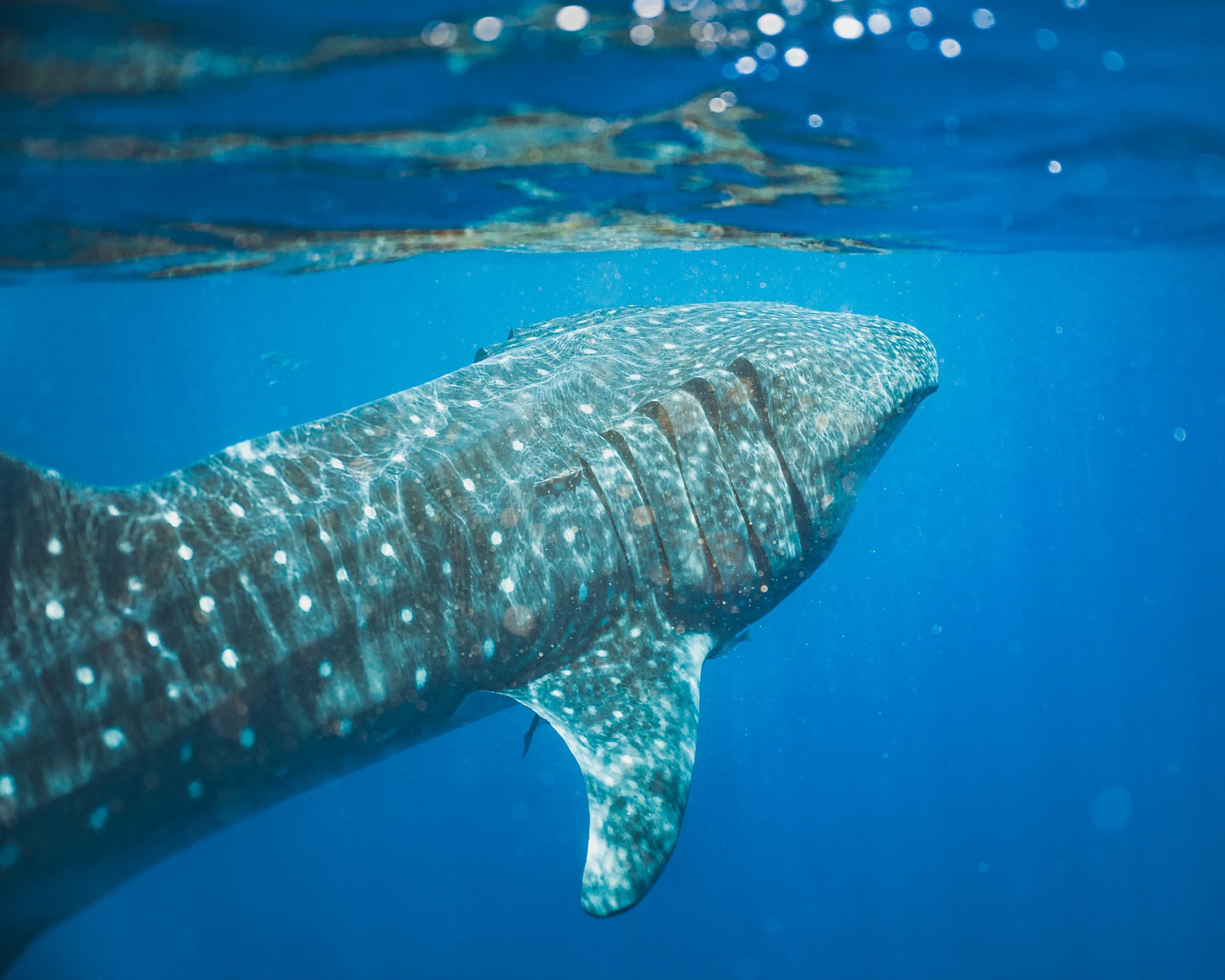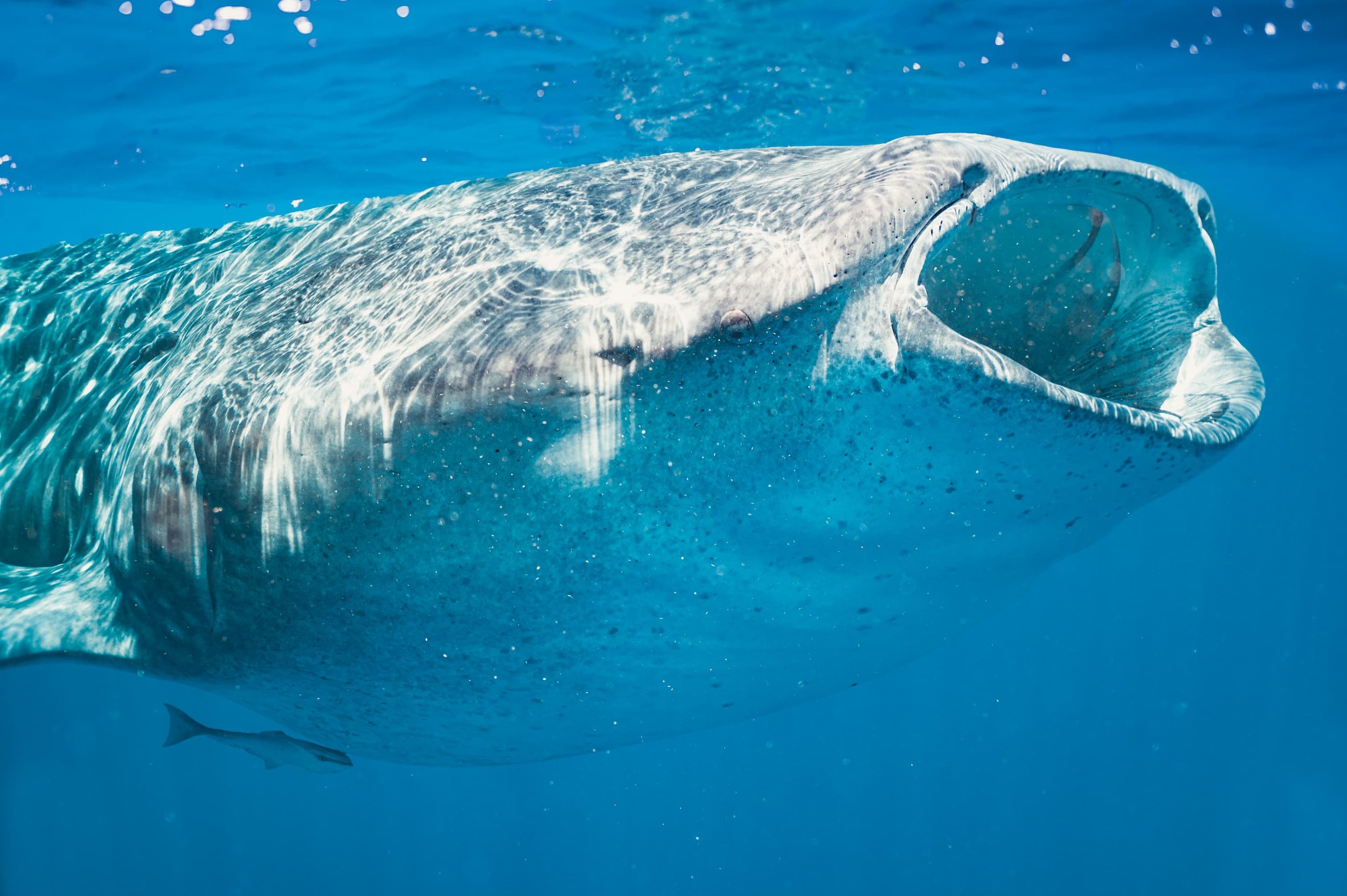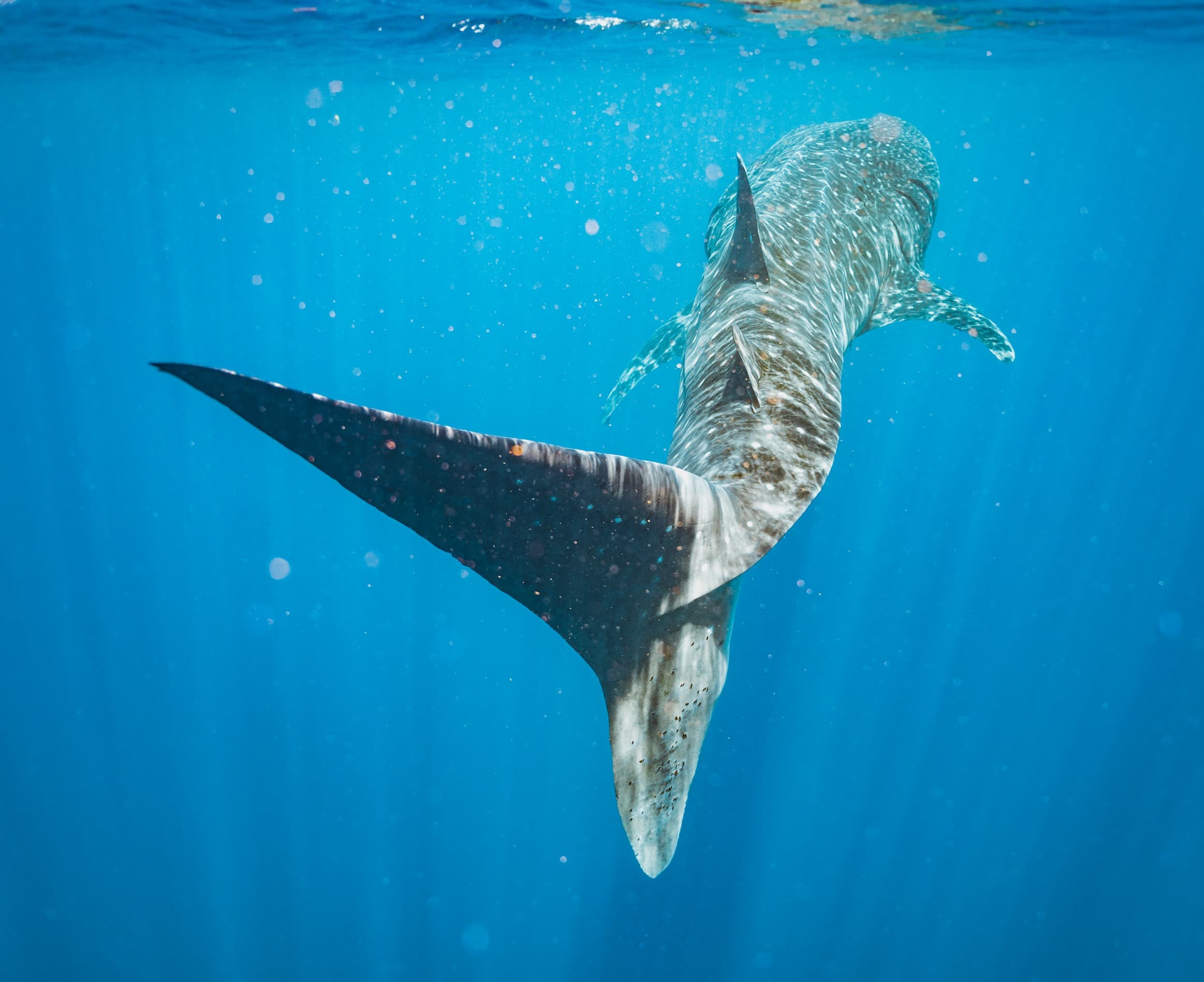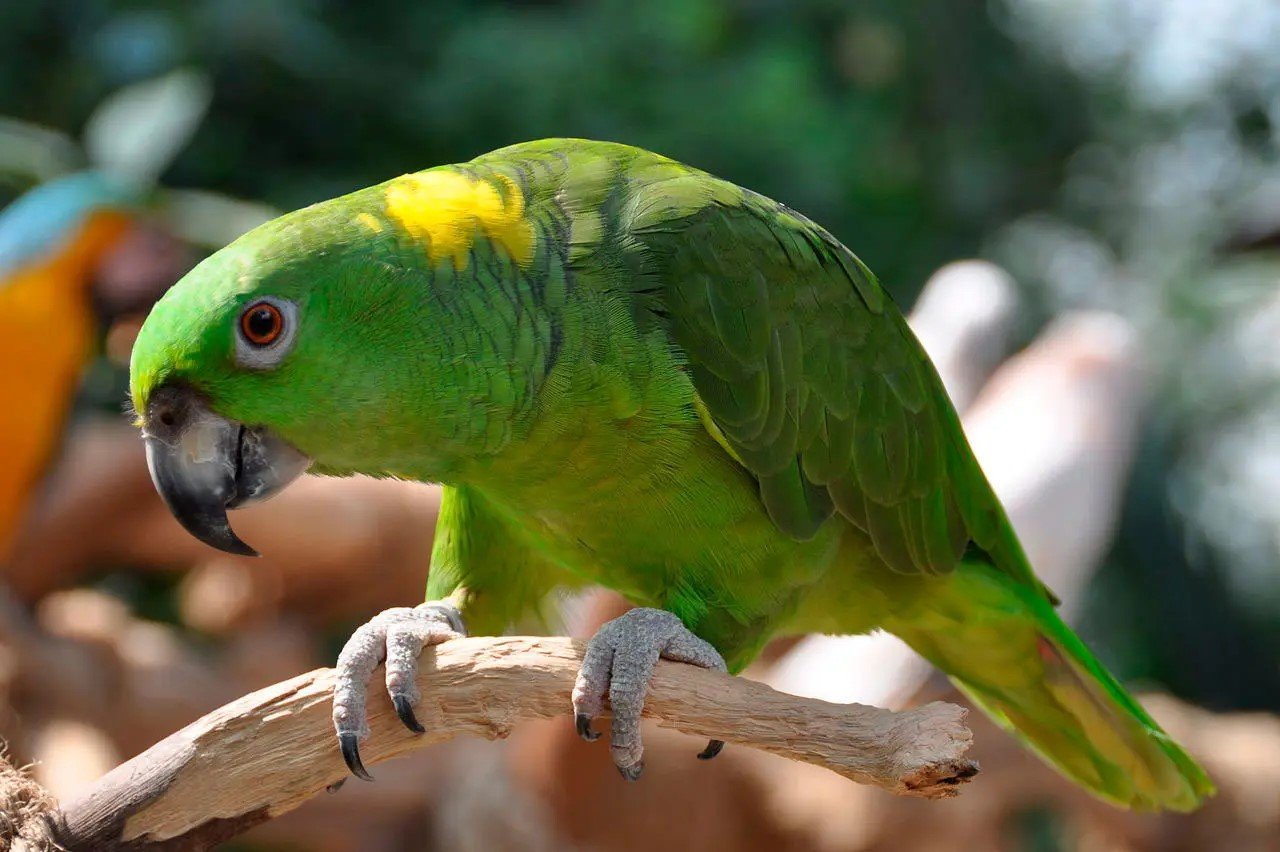
Honduras
Common Name: Whale Shark
Scientific Name: Rhincodon typus
Image: © Nick Lang

Fact
The whale shark is the world’s largest fish. They are not a whale.
About
Image: © Nick Lang
Overview:
The average length of a whale shark is 12m when fully grown but can reach up to 18m. They weigh an average of 5 tons and they can be identified through their unique spots.
Lifespan:
Whale sharks lack otoliths (the bone structure in their skull that are used in most fish to determine age). Instead carbon dating has been used to estimate age, which estimatations suggesting that whale sharks can live to at least 50 years, but it is thought there may be individuals as old as 150. They are thought to reach maturity around 25-30 years old but data is limited.
When to spot:
Solitary whale sharks can mainly be seen in Honduras between March-April and October-December; however June-September is the annual migration and they can be spotted in small groups. The Island of Utila is one of the few places in the world that experiences whale shark sightings year-round, and is commonly known as a ‘hotspot’ for whale shark tourism.
Where to spot:
They are most commonly seen in Honduras around Utila, Roatan and the Bay Islands, 3 islands off of the mainland. Their global range spreads over all equatorial and warm temperate oceans.
Diet:
While they are meat-loving carnivores, whale sharks are filter feeders. They eat small fish, shrimp, plankton and fish eggs.
Predators:
Whale sharks are rarely predated as they are so large, but blue marlin and blue sharks have been known to prey on smaller or young individuals.

Fact
The migration of a whale shark spans thousands of miles, but they move very slowly, approximately 3 miles per hour.
How To Identify
Whale sharks can be identified through their unique patterns of spots, large size and mouth that can stretch up to 4 feet wide.
Vulnerability Status
IUCN Red List status: Endangered
Country status: As whale sharks are a migratory species country status is not applicable.
Population size: There is very limited data on whale shark population size. A 2009 study estimated there to be around 119,000–238,000 individuals worldwide, which is thought to be steadily decreasing. 95 individuals have been identified off the coast of Utila, but this varies year on year. They show sex bias with around 2.5 times more males sighted than females.
Threats
Key threats to species:
Illegal/unregulated fishing
Bycatch: Whale sharks are closely associated with tuna and commonly found together making bycatch likely.
Tourism: Whale sharks are threatened by interruption to feeding and being hit by boat propellers.
Pollution in hotspots, such as the Deepwater Horizon oil spill in the Gulf of Mexico in 2010, caused both mortality and displacement of whale sharks.
Importance of the species:
Whale sharks regulate the world's plankton levels, preventing them from growing without restrictions which would have negative effects on the environment. They are important vectors for transporting nutrients from productive coastal waters and offshore frontal regions to nutrient-poor areas, which includes many tropical oceanic habitats.

Fact
According to the IUCN, the Indo-Pacific population of the whale shark is thought to have reduced 63 percent over the past 75 years. The population in the Atlantic is thought to have been reduced by more than 30 percent.
Conservation Actions
The Whale Shark & Oceanic Research Centre has been granted the only research permit to study whale sharks in the country by the Honduran Environmental Department. They established whale shark encounter guidelines to promote responsible whale shark encounters, and in 2008 these guidelines were passed through the Honduran parliament to protect whale sharks by law.
What You Can Do To Help
Whale Shark & Oceanic Research Centre offer citizen science internships.
ECOCEAN Global Whale Shark Library is a citizen science photo ID programme that aims to identify population structure.
Further Information
Click the title below for further information.
-
WSORC have been gathering data on the whale shark population since 1997, and have a comprehensive sightings database. They have been granted the only research permit to study whale sharks in the country by the Honduran Environmental Department.
Common Name: Yellow-naped parrot
(otherwise known as yellow-naped amazon)
Scientific Name: Amazona auropalliata

Fact
Over 92% of the yellow-naped parrot population has been lost in the last three generations.
About
Overview:
The yellow-naped Parrot inhabits southern Mexico and Central America. These are relatively large parrots with adults growing to around 12 to 15 inches (30 to 40 cm) and weighing around 1lb (0.5kg).
Lifespan:
They have a life expectancy of 50 to 60 years or longer with adequate care; some can reach ages between 70 and 90 years old.
Habitat:
They inhabit dry forests and mangroves, nesting in naturally occurring cavities. This parrot will not excavate new cavities but they will chew the entrance. They will nest in a wide variety of trees but the dead Coyols (palm trees) are a preferred species. During breeding the pairs are monogamous and will defend small territories by duetting with their partners.
When to spot:
They breed between February and June in Honduras but can be seen all year round.
Diet:
Like many other parrot species, the yellow-naped parrot feeds on nuts, berries, seed and fruits.
Predators:
Humans are the main predator of the yellow-naped parrot as they are often poached for the pet trade.

Fact
A rare and extraordinary mutation of the yellow-naped parrot makes their entire body a vivid turquoise colour.
How To Identify
The yellow-naped parrot is identified by its green crown and forehead and a yellow band across the lower nape and hindneck. It has orange eyes, a dark grey beak which becomes paler at the base of the upper mandible. Their feet are also dark grey.
Image: © Birdlife International
Vulnerability Status
IUCN Red List status: Critically endangered
Country status: Functionally extinct.
Population size: A recent census indicated that the population of the yellow-naped parrot is declining throughout the range, with reduced populations in Nicaragua and Costa Rica and functionally extinct populations in Honduras, Mexico and Guatemala. Globally there are as low as 10,000 mature yellow-naped parrots left.
Yellow-naped parrots make popular pets and have frequently been poached for the pet trade. Deforestation has also played a large role in the decrease in population size. Honduras has lost 15% of tree cover since 2000, which has led to fragmented habitats for the parrots.
Threats
Key threats to species:
The yellow-naped parrot readily mimics sounds including human speech. This makes them popular in aviculture and can cost anywhere between US $1,200-$2,500.
Alongside a low breeding success rate (89%), the majority of nests fail due to illegal poaching for the pet trade.
In Honduras, the forest homes of these parrots are severely fragmented and so the range of an individual is limited.
Climate change is also playing havoc with the population due to extensive and abnormal droughts.
Air quality also has an effect on the young of many bird species with reduced egg production and hatching, lung failure, inflammation, and reduced body size.
Importance of the species:
Not only are the yellow-naped parrots emblematic of tropical forests, they also play an indicator role for healthy ecosystems and are important for seed dispersal, helping to propagate the forests in which they live.
After death they provide food for scavengers and decomposers.

Fact
Yellow-naped parrots are monogamous; once they reach maturity at two years old, they mate for life.
Conservation Actions
In 2012, Paso Pacífco began an incentive program with farmers in Nicaragua paying farmers two times the price they would receive for a live fledgling on the black market. By involving and incentivising local communities to maintain healthy forest ecosystems and to leave the yellow-naped parrots in the wild the population can boom again. Other non-profit organisations are also working tirelessly to support local communities in conservation efforts.
Unfortunately many captive yellow-naped parrots are almost impossible to rehabilitate and release into the wild. This is because when yellow-naped parrots are poorly treated or neglected they can easily develop destructive behaviour patterns and depression. These are expressed by different emotional and physical problems including biting people and feather plucking among other behaviours.
What You Can Do To Help
With deforestation and air quality playing major roles in the yellow-naped parrot's decline, check out our Deforestation and Air Quality pages to find out more about how you can help.
The Mesoamerican Parrot Census Network, with the support of the World Parrot Trust, has been engaging volunteers to assess the status of the yellow-naped parrot and assist with conservation efforts across their range. If you have biological or conservation training you can apply to get involved with this essential work.
Further Information
Click the title below for further information.
-
Engaging volunteers from the parrots home countries to assist in counting yellow-naped Amazon parrots at their roosts.
-
The World Parrot Trust (WPT) has brought together global wildlife conservation and welfare specialists to direct and put into action effective programs to protect parrots.











